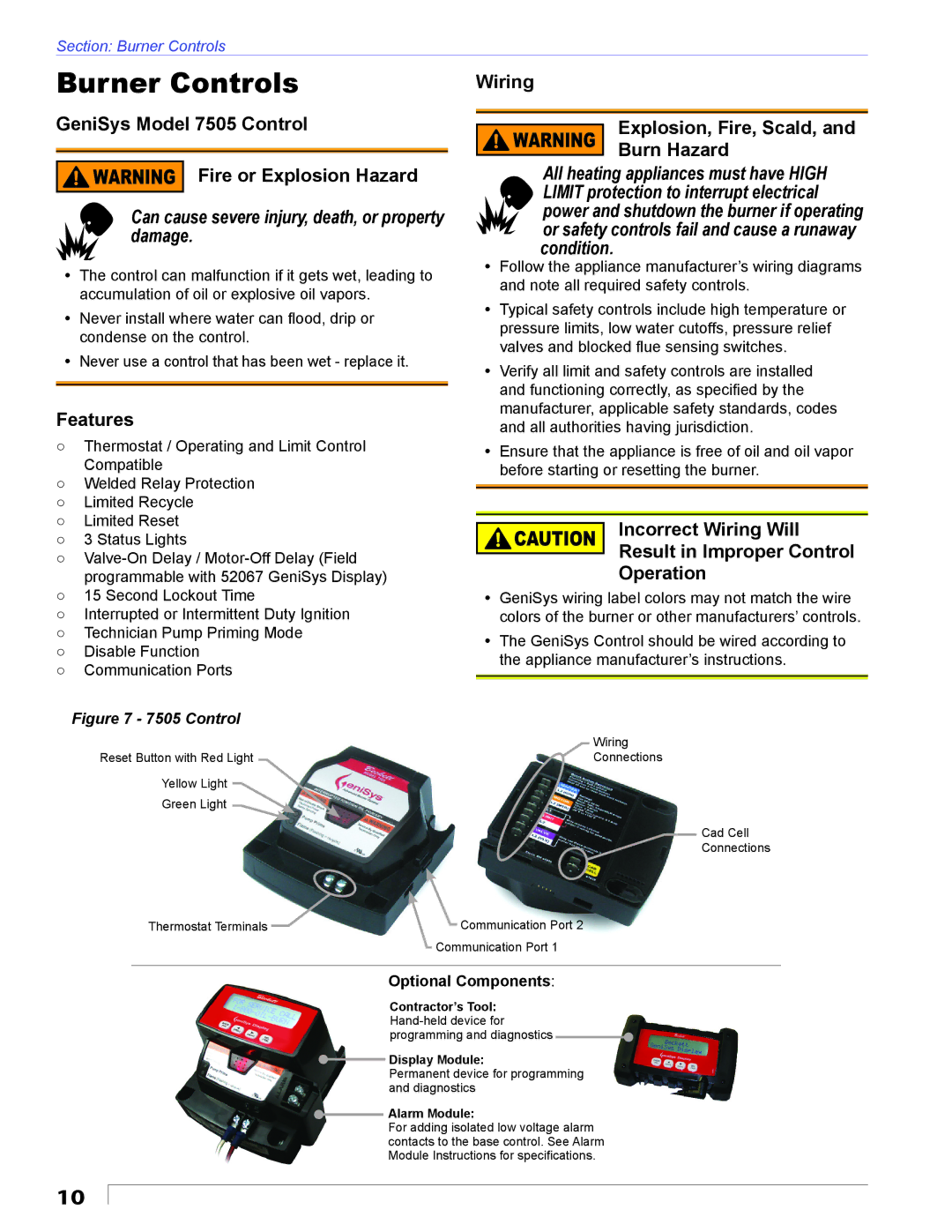
Section: Burner Controls
Burner Controls
GeniSys Model 7505 Control
Fire or Explosion Hazard
Can cause severe injury, death, or property damage.
yThe control can malfunction if it gets wet, leading to accumulation of oil or explosive oil vapors.
yNever install where water can flood, drip or condense on the control.
yNever use a control that has been wet - replace it.
Features
○Thermostat / Operating and Limit Control Compatible
○Welded Relay Protection
○Limited Recycle
○Limited Reset
○3 Status Lights
○
○15 Second Lockout Time
○Interrupted or Intermittent Duty Ignition
○Technician Pump Priming Mode
○Disable Function
○Communication Ports
Figure 7 - 7505 Control
Reset Button with Red Light
Yellow Light
Green Light![]()
Wiring
Explosion, Fire, Scald, and
Burn Hazard
All heating appliances must have HIGH LIMIT protection to interrupt electrical power and shutdown the burner if operating or safety controls fail and cause a runaway condition.
yFollow the appliance manufacturer’s wiring diagrams and note all required safety controls.
yTypical safety controls include high temperature or pressure limits, low water cutoffs, pressure relief valves and blocked flue sensing switches.
yVerify all limit and safety controls are installed and functioning correctly, as specified by the manufacturer, applicable safety standards, codes and all authorities having jurisdiction.
yEnsure that the appliance is free of oil and oil vapor before starting or resetting the burner.
Incorrect Wiring Will
Result in Improper Control
Operation
yGeniSys wiring label colors may not match the wire colors of the burner or other manufacturers’ controls.
yThe GeniSys Control should be wired according to the appliance manufacturer’s instructions.
Wiring
Connections
Cad Cell
Connections
Thermostat Terminals | Communication Port 2 |
| Communication Port 1 |
Optional Components:
Contractor’s Tool: ![]()
![]() Display Module:
Display Module:
Permanent device for programming and diagnostics
 Alarm Module:
Alarm Module:
For adding isolated low voltage alarm contacts to the base control. See Alarm Module Instructions for specifications.
10
